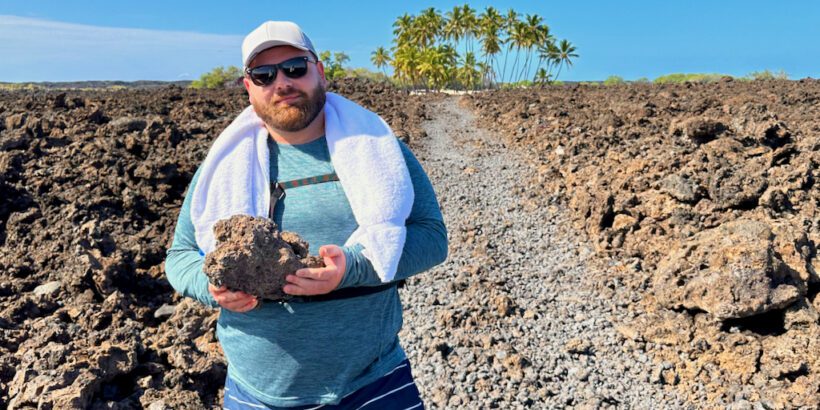On some Hawaiian islands like the Big Island, you can find lava rocks scattered all about the island, sometimes blanketing huge swaths of landscape and mountainsides for miles upon miles.
Surely taking a small rock or two with you as a souvenir would be harmless, right?
Well, maybe not.
In this article, we’ll take a look at whether or not you are allowed to take rocks from Hawaii and the type of considerations you’ll want to think about like whether or not it’s against the law.
Table of Contents
Taking things from any place when traveling
Let’s start off with some universal travel advice.
In general, it’s best to not take anything from destinations when traveling. “Leave no trace” is the way to go.
Whether it’s something natural or man-made, removing objects from a destination is not a good practice for a variety of reasons.
The biggest one is usually because: if everyone else did what you were doing, what would the end result be?
It’s possible that it could result in the complete disappearance of something unique and valuable. Consider the Trinity Site in New Mexico where the first atomic bomb exploded.
You can still find shimmering green radioactive rocks called “trinitite” at ground zero that were formed from that mega-explosion.
But imagine if every tourist who visited the Trinity Site took a small piece with them. Eventually, all of the trinitite would be gone and nobody else would be able to admire that fascinating piece of history.
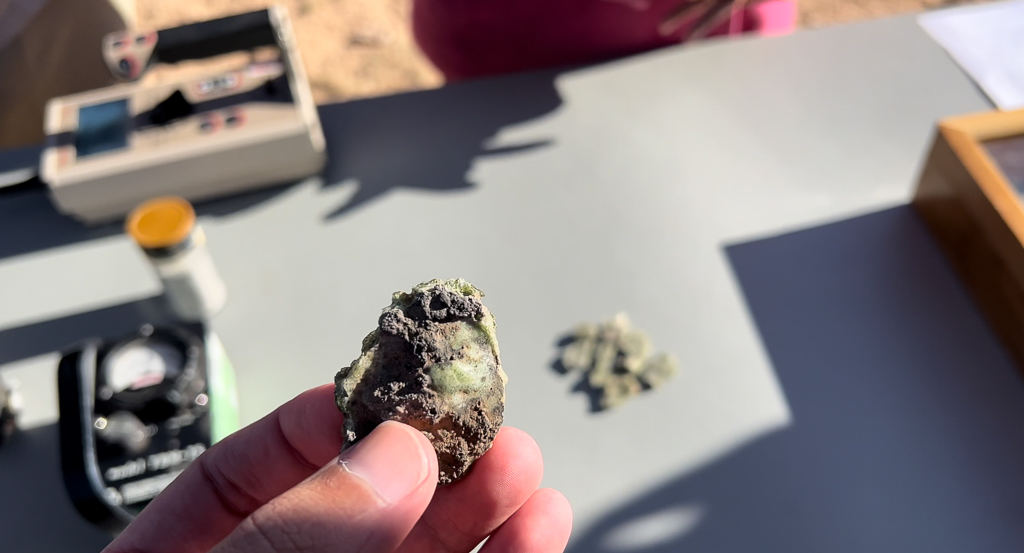
In the case of lava rocks on a place like the Big Island, I don’t think anybody is worried about those rocks disappearing.
Consider that in 2018 the eruption resulted in 875 acres of new land to the island.
That’s an insane amount of “rocks” added to the island and so I don’t think there would be any type of rock shortage anytime soon even if tourists aggressively removed small rocks from the Big Island.
However, there’s more to consider.
It’s possible that the removal of lava rocks in certain tourist hot spots could lead to unsightly or unnatural changes in the landscape or terrain. I doubt this is a serious threat at most places but it’s not something to ignore.
Much worse, removing rocks from certain areas could affect the ecosystem. This is particularly true around pristine stream areas where local species rely on the rocks for shelter or in restoration areas where minimal soil disturbance is needed.
Often times, you can find signs that tell you to tread lightly and in those cases you absolutely want to avoid taking or even disturbing the rocks.
While there could be concerns about affecting the physical nature of the landscape, another reason for not taking lava rocks with you from Hawaii has to do with a curse.
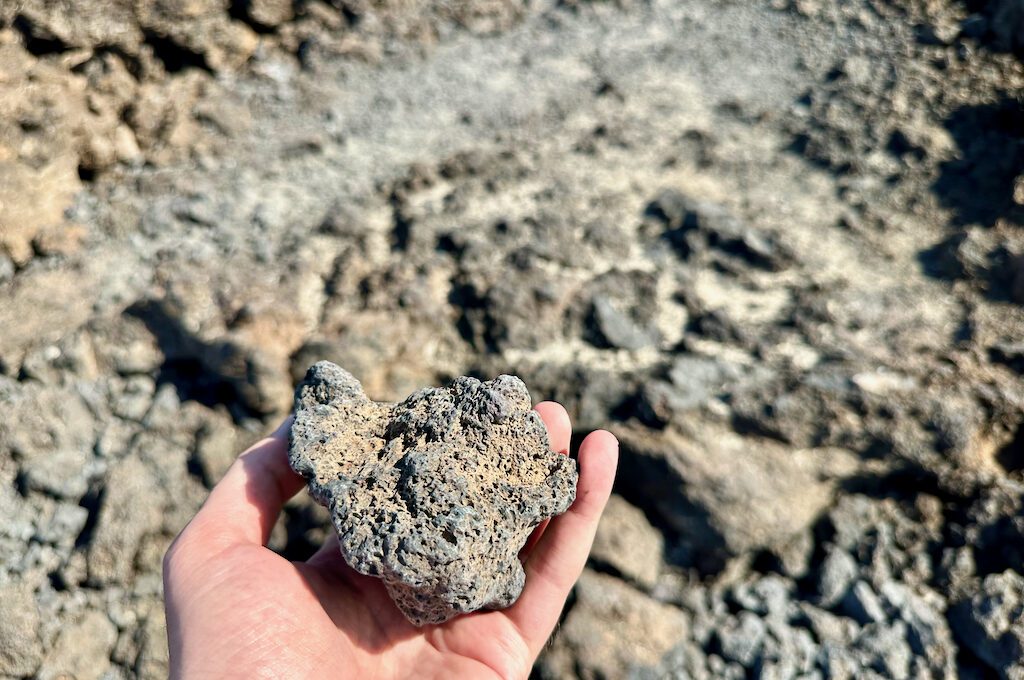
Bad luck: the curse of Pele
According to Hawaiian legend, it’s bad luck to remove lava rocks from Hawaii. It’s known as the “curse of Pele,” with Pele being the fire and volcano goddess said to reside in the crater of Kilauea.
Pele considers the rocks and sand to be her children and it’s said that she will do anything to protect them, including cursing those who take them with bad luck.
And we’re not talking getting stuck behind a train bad luck. People report experiencing major life altering events like losing a pet or getting divorced when feeling Pele’s wrath.
In fact, sometimes their lives get so bad that they even send the rocks back to the island with the hopes of undoing the curse. It’s reported that each year more than 3,500 rocks, packages of sand, and coral are returned to Hawaii national parks.
One apparent workaround for the curse is to have a local “gift” you a rock. No word yet on if that really works but it could give you some peace of mind if you’re on the superstitious side.
Pele’s curse may not be ancient in origin, though.
It’s very likely that this curse is a relatively modern invention created by park rangers or tour guides and designed to keep tourists in line. But lots of people take it seriously such that taking lava rocks from Hawaii has become taboo.
I’m not really one to get hung up on curses and Hawaii produces a lot of sand, crushed stone, and potentially basalt fiber that’s presumably sometimes exported out of its home island, which sort of calls the whole curse thing into question.
And then there is the whole confirmation bias thing where you don’t hear anything from all of the people who avoided misfortune.
But beyond the curse, there’s also the separate issue of taking rocks from national park sites, which can get you in real legal trouble.
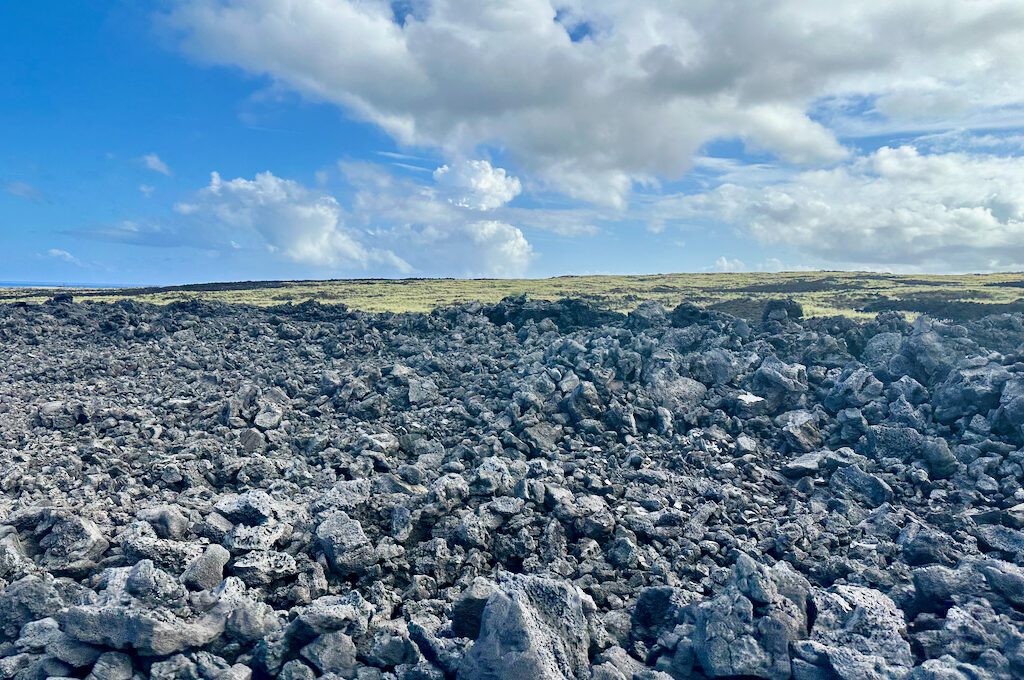
National park sites
It’s usually illegal to remove any natural resources from a national park site.
The NPS states that:
Collecting, rockhounding, and gold panning of rocks, minerals, and paleontological specimens, for either recreational or educational purposes is generally prohibited in all units of the National Park System (36 C.F.R. § 2.1(a) and § 2.5(a)).
Violating this statute could result in criminal penalties.
This means that when you head to a place like Hawaii Volcanoes National Park or Haleakalā National Park, you are NOT allowed to remove lava rocks (or any type of rocks).
Lots of state parks also have similar policies that prohibit taking anything with you from the park, including rocks.
Another issue with taking or messing with rocks in national parks and state parks is that they are often used as cairns to help people navigate trails and routes.
If you go around taking these rocks, or making stacks yourself, you could be putting hikers in danger especially in areas where there are dangerous drop offs or tricky terrain. Again, leaving no trace is the key.
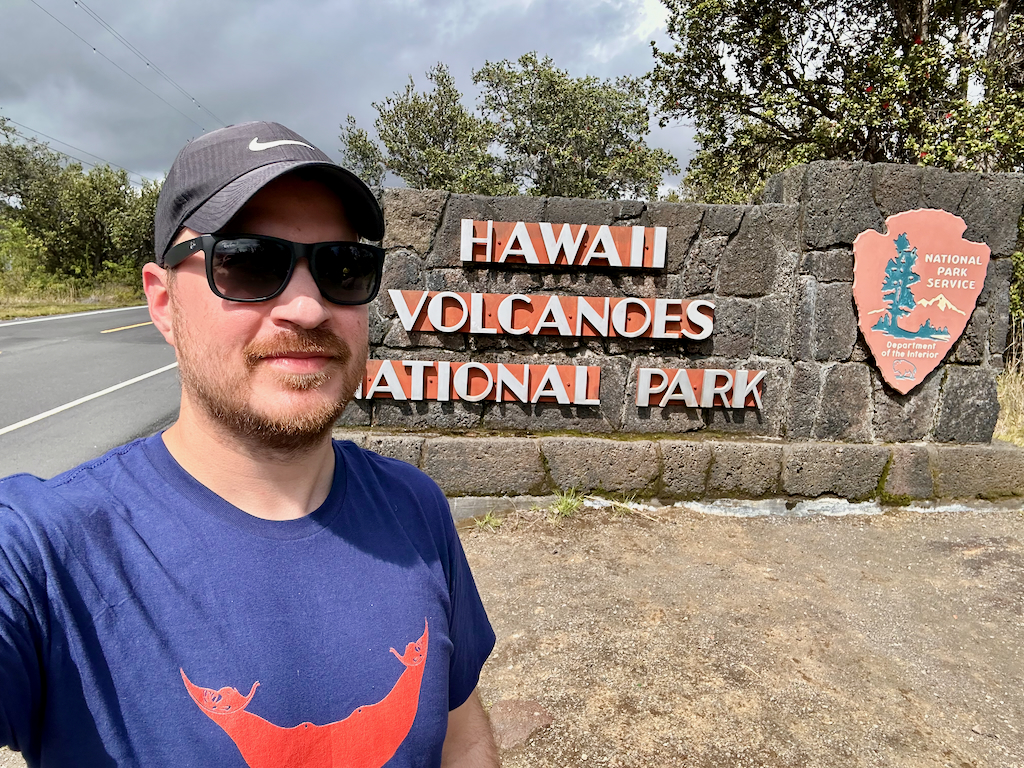
Respect
In lots of cases, it feels unnecessary and some might even say disrespectful to go to another destination and take natural resources for your own pleasure.
This is especially true in the world we live in where high quality photos and videos are so easy to take and store (don’t take the digital age for granted!).
And trust me, I get it. It’s cool to look at your shelf or whatever and see some physical reminder of your visit to an exotic location.
But ask yourself: do you really need another “thing” to clutter up your house or apartment? Do you even have a good place to put that item?
In parts of Polynesia like Hawaii, natives have a strong reciprocal and familial relationship to the land, known as “Āina.”
Removing rocks from the land for the sake of showing off your keepsake collection probably does not jibe well with that symbiotic ideology very well. That’s because it’s all about taking and not giving. There’s no balance.
To Native Hawaiians, land is not a commodity; it is the foundation of their cultural and spiritual identity as Hawaiians. The ‘āina is part of their ‘ohana, and they care for it as they do for other members of their families. For them, the land and the natural environment are alive, respected, treasured, praised, and even worshiped.”
Professor Pualani Kanakaʻole Kanahele, Kumu Hula
In some cases, removing a rock could be taken as a very disrespectful act because you could be removing something that you don’t even realize is culturally significant such as rocks from a sacred site.
For example, if you were to remove a rock from Mauna Kea, you could be taking rocks from an ancient ancestral site without even realizing it. Some tourists have even upset locals by throwing rocks into sacred sites.
It’s kind of hard for some people to truly comprehend these infractions because they did not grow up learning about and revering these rock temples, which is understandable.
But if the natives tell you that something holds sacred significance, that should be more than enough to motivate you to properly respect it. Even if you have your doubts, it’s just a matter of being considerate.
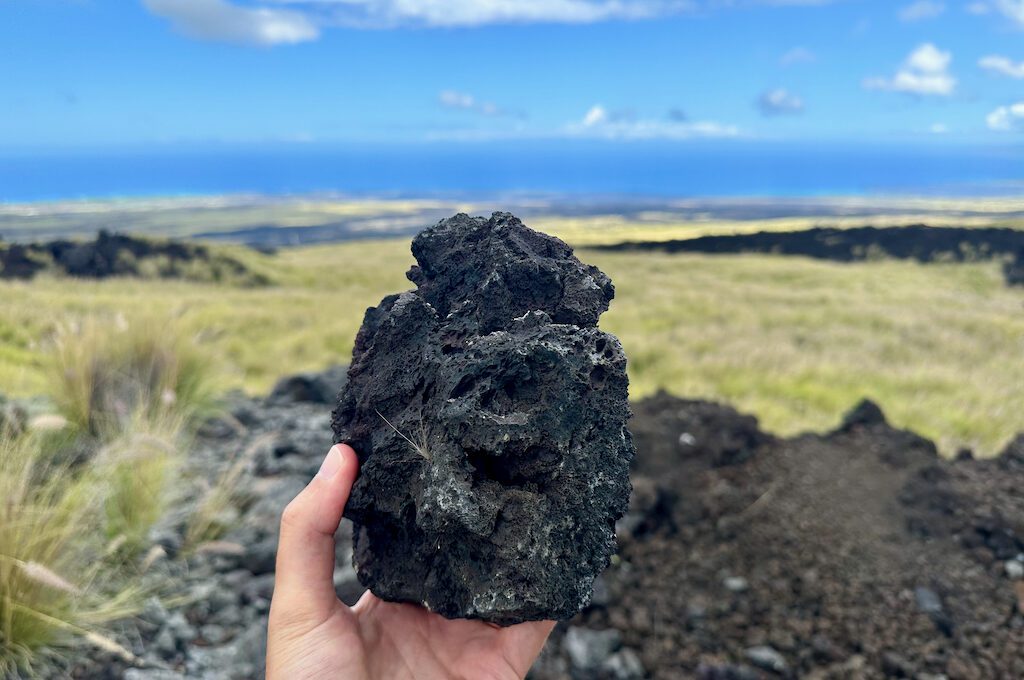
Bringing other items back from Hawaii
In addition to rocks, you need to be mindful about the restrictions for bringing other items back from Hawaii.
One of the biggest restrictions is that you cannot take sand from beaches in Hawaii.
But there are also a lot of restrictions for bringing agricultural products back. Items that are prohibited include most fresh fruits and vegetables and certain types of plants and flowers. Read more about what is allowed back to the mainland.
Keep in mind, you will have to send your checked bags through a USDA agricultural screening on your way back to the mainland and there can be fines for not declaring.
There are some exceptions to the prohibited fruits though. For example you can bring a limited amount of pineapples back with you to the mainland.
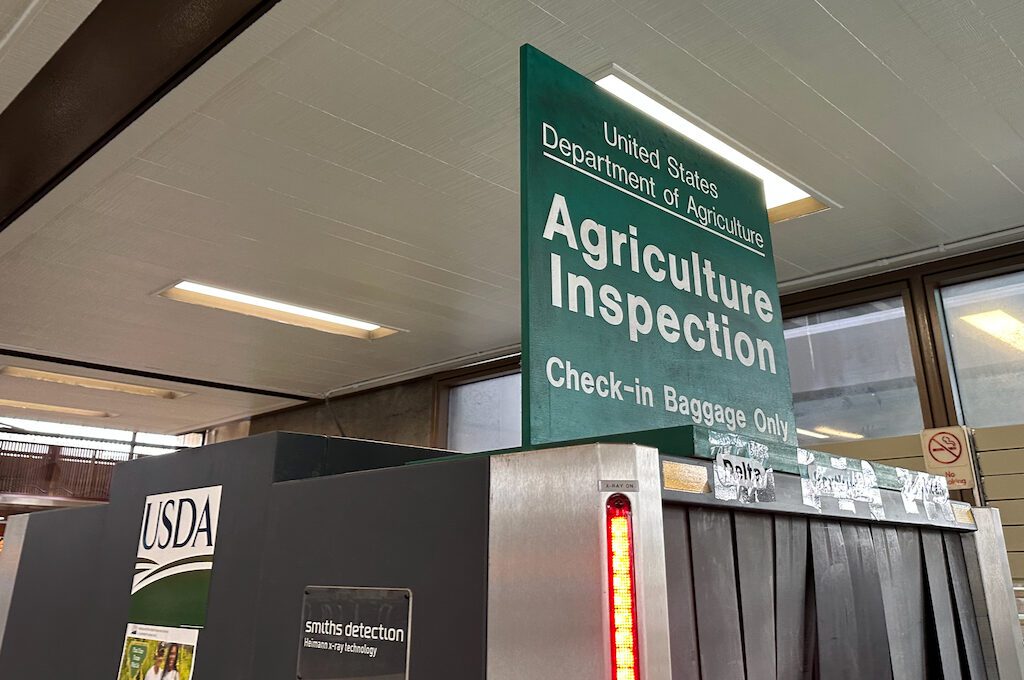
Returning rocks to Hawaii
If you find yourself needing to return rocks to Hawaii, these are reportedly addresses you can send your rocks back to:
- Rocks taken from Maui, Lanai, or Molokai: Haleakala National Park, PO Box 369, Makawao, HI 96768
- Rocks taken from the Big Island: Hawaii Volcanoes National Park, PO Box 52, Hawaii National Park, HI 96718
- Rocks taken from Kauai: Kokee Natural History Museum, PO Box 100, Kekaha, HI 96752
- Rocks taken from Oahu: Hawaii Volcanoes National Park, PO Box 52, Hawaii National Park, HI 96718
Keep in mind that there are reports of rangers just tossing the rocks they receive into a pile behind the visitor center. (It’s understandable because there are so many of these packages coming in.)
So if you’re hoping your rocks to be returned to where they were taken from, you would probably have to return to the island and do it yourself unless you know someone who would do it for you.
Final word
Overall, I would recommend not bringing rocks back from Hawaii.
Even if you don’t believe in Pele’s curse, there’s a chance you could be taking rocks from a sacred site or a location known for having a sensitive ecosystem. If you’re in a national park there’s always the chance you could get into legal trouble.
Finally, while it might be legal to take rocks from some locations, taking rocks with you does not seem to align very well with the locals’ reciprocal relationship with the land, so it’s probably best avoided in the vast majority of cases.
Daniel Gillaspia is the Founder of UponArriving.com and the credit card app, WalletFlo. He is a former attorney turned travel expert covering destinations along with TSA, airline, and hotel policies. Since 2014, his content has been featured in publications such as National Geographic, Smithsonian Magazine, and CNBC. Read my bio.

